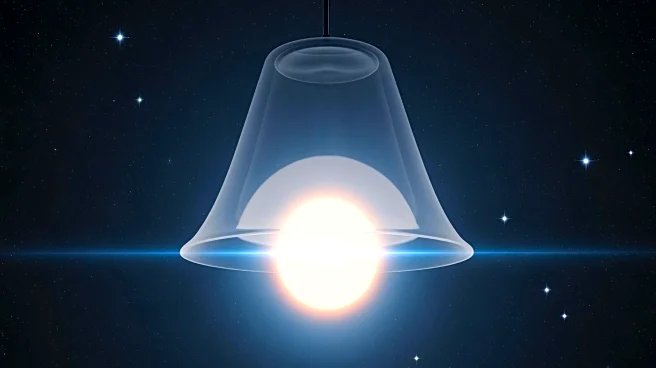What's Happening?
An international team of researchers led by the Leibniz Institute for Astrophysics Potsdam has analyzed stellar velocities from 12 of the smallest and faintest galaxies in the Universe. Their findings
suggest that the internal gravitational fields of these galaxies cannot be explained by visible matter alone, supporting the existence of Dark Matter. The study challenges the Radial Acceleration Relation (RAR) paradigm, which posits a simple relationship between visible matter and gravitational force.
Why It's Important?
This research provides significant evidence supporting the presence of Dark Matter, a crucial component in understanding the Universe's structure. By challenging existing paradigms, the study could lead to new models and theories in cosmology. The findings may influence future astronomical research and the development of technologies to detect Dark Matter, impacting scientific understanding and technological advancements.
What's Next?
Future observations targeting even fainter and more distant galaxies will further narrow the search for Dark Matter. Researchers will continue to refine models and simulations to better understand the nature of Dark Matter and its role in cosmic structures. These efforts may lead to breakthroughs in physics and cosmology.
Beyond the Headlines
The study highlights the importance of interdisciplinary collaboration in advancing scientific knowledge. Ethical considerations regarding the allocation of resources for such research may arise, as well as discussions on the implications of discovering new cosmic phenomena.











